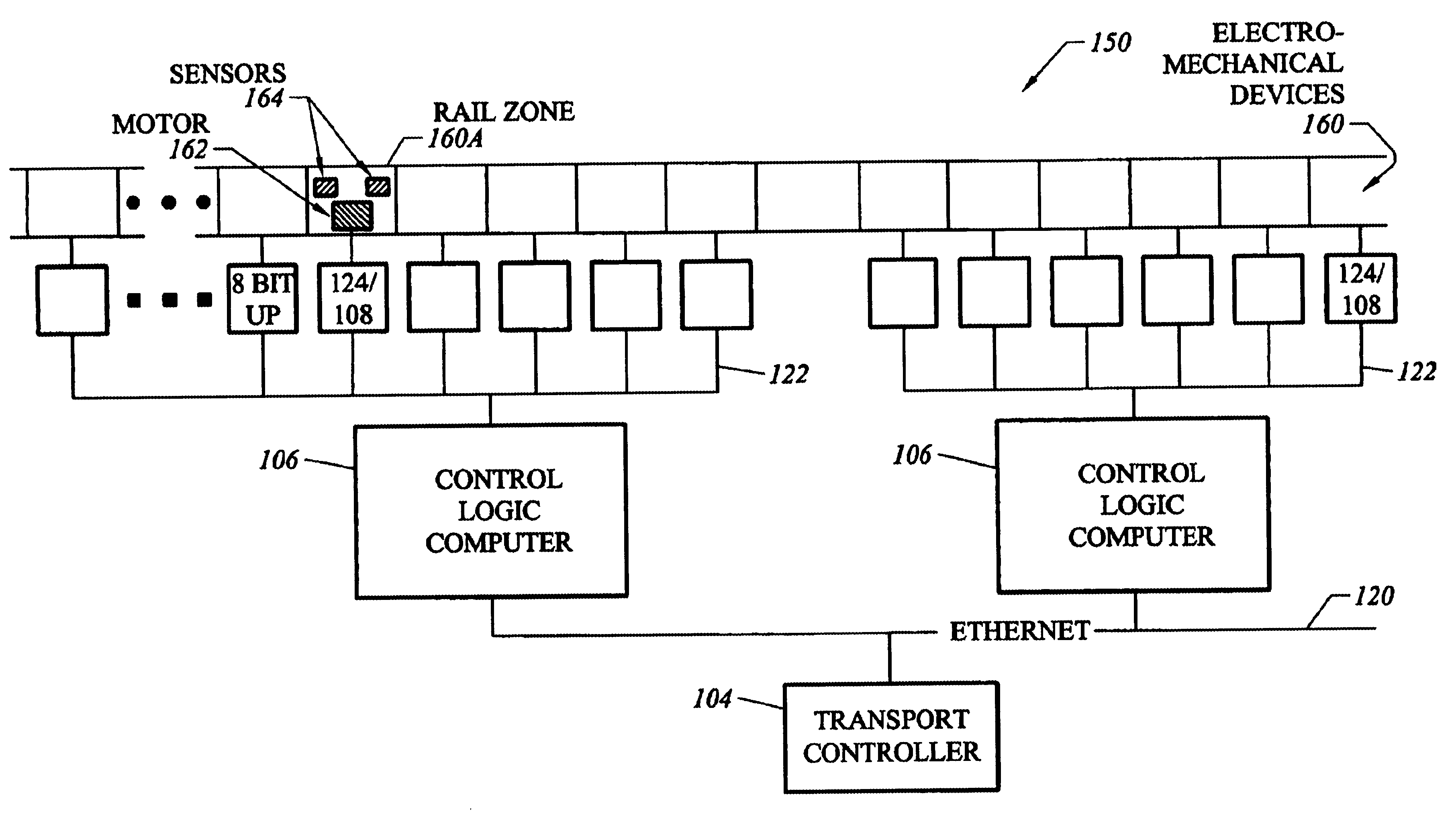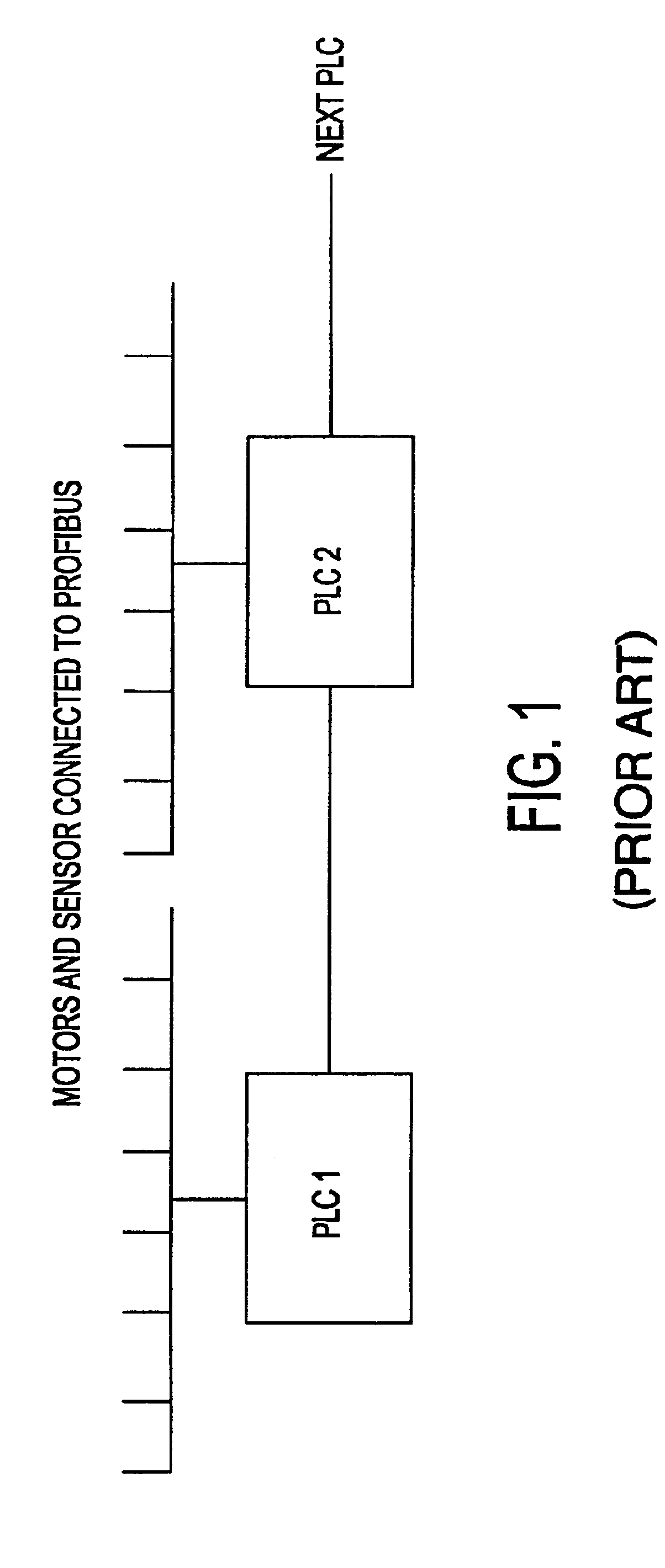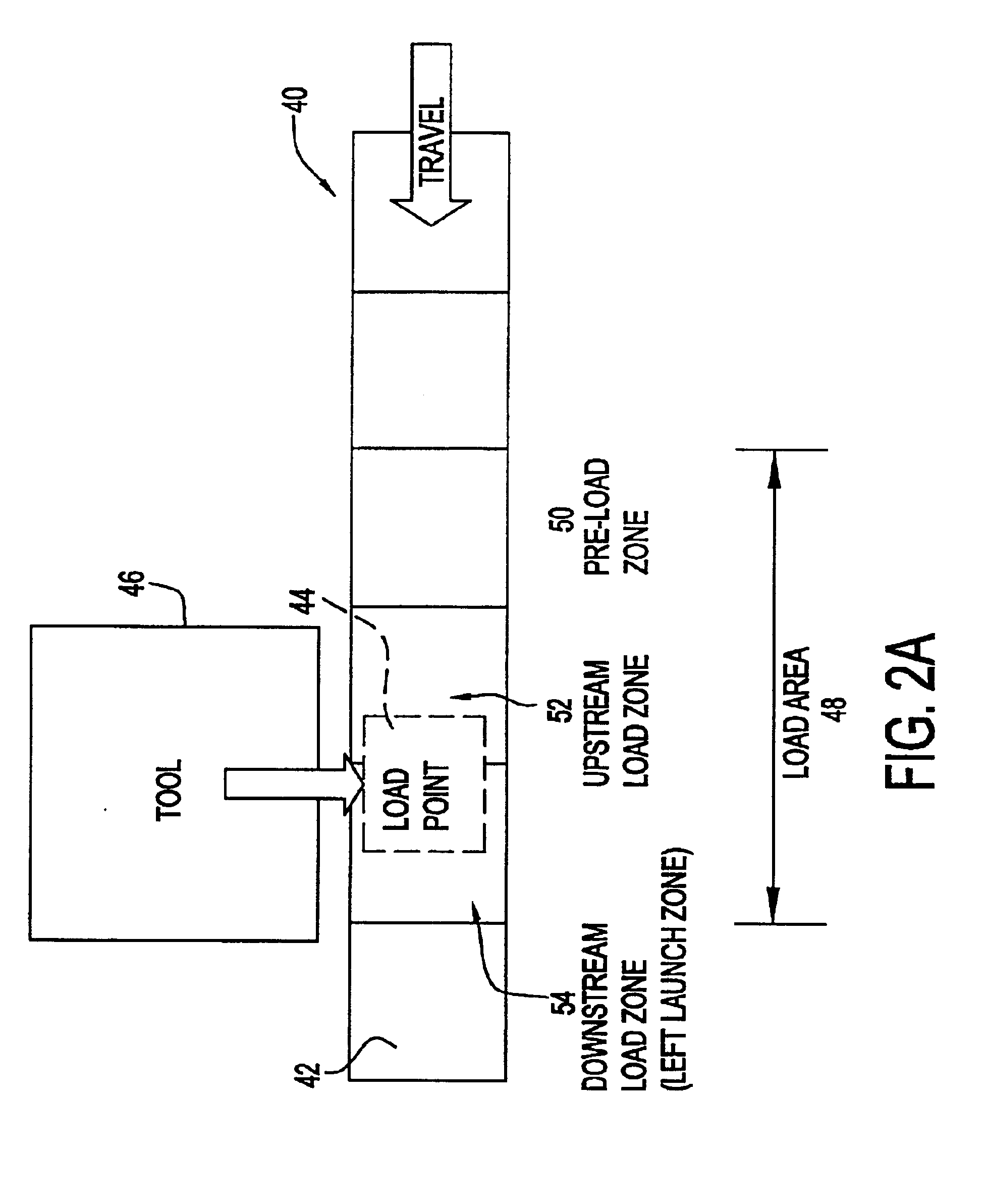Distributed control system architecture and method for a material transport system
a control system and material transportation technology, applied in the direction of total factory control, furnaces, instruments, etc., can solve the problems of complicated material movement between conveyors and work stations along the path, carts and agvs lack the advantages of an automated conveyor, and semiconductor wafers are delica
- Summary
- Abstract
- Description
- Claims
- Application Information
AI Technical Summary
Problems solved by technology
Method used
Image
Examples
Embodiment Construction
The present invention is described herein with reference to a few specific embodiments. The present description uses terms whose meanings are provided in the following glossary:
A. Glossary of Terms
TermDefinitionAMHSAutomated Material Handling SystemCANController Area Network. Standard for networkingembedded devices together.CarrierSynonym for Container.CIMComputer Integrated Manufacturing. In this context theterm loosely means all computer systems with which theTransport System is in communication.ContainerGeneric term used to refer to an Open Cassette, Box orPod. A container is that object which is transported bythe Transport System.Control LogicHardware Platform for the mid-tier software components.ComputerCORBACommon Object Request Broker Architecture. Standarddeveloped by the Object Management Group (OMG) as amethod for distributed software applications to inter-operate over heterogeneous networks.CornerA corner is a director whose only function is to makecarriers turn a corner ...
PUM
| Property | Measurement | Unit |
|---|---|---|
| size | aaaaa | aaaaa |
| exit angle | aaaaa | aaaaa |
| speeds | aaaaa | aaaaa |
Abstract
Description
Claims
Application Information
 Login to View More
Login to View More - R&D
- Intellectual Property
- Life Sciences
- Materials
- Tech Scout
- Unparalleled Data Quality
- Higher Quality Content
- 60% Fewer Hallucinations
Browse by: Latest US Patents, China's latest patents, Technical Efficacy Thesaurus, Application Domain, Technology Topic, Popular Technical Reports.
© 2025 PatSnap. All rights reserved.Legal|Privacy policy|Modern Slavery Act Transparency Statement|Sitemap|About US| Contact US: help@patsnap.com



